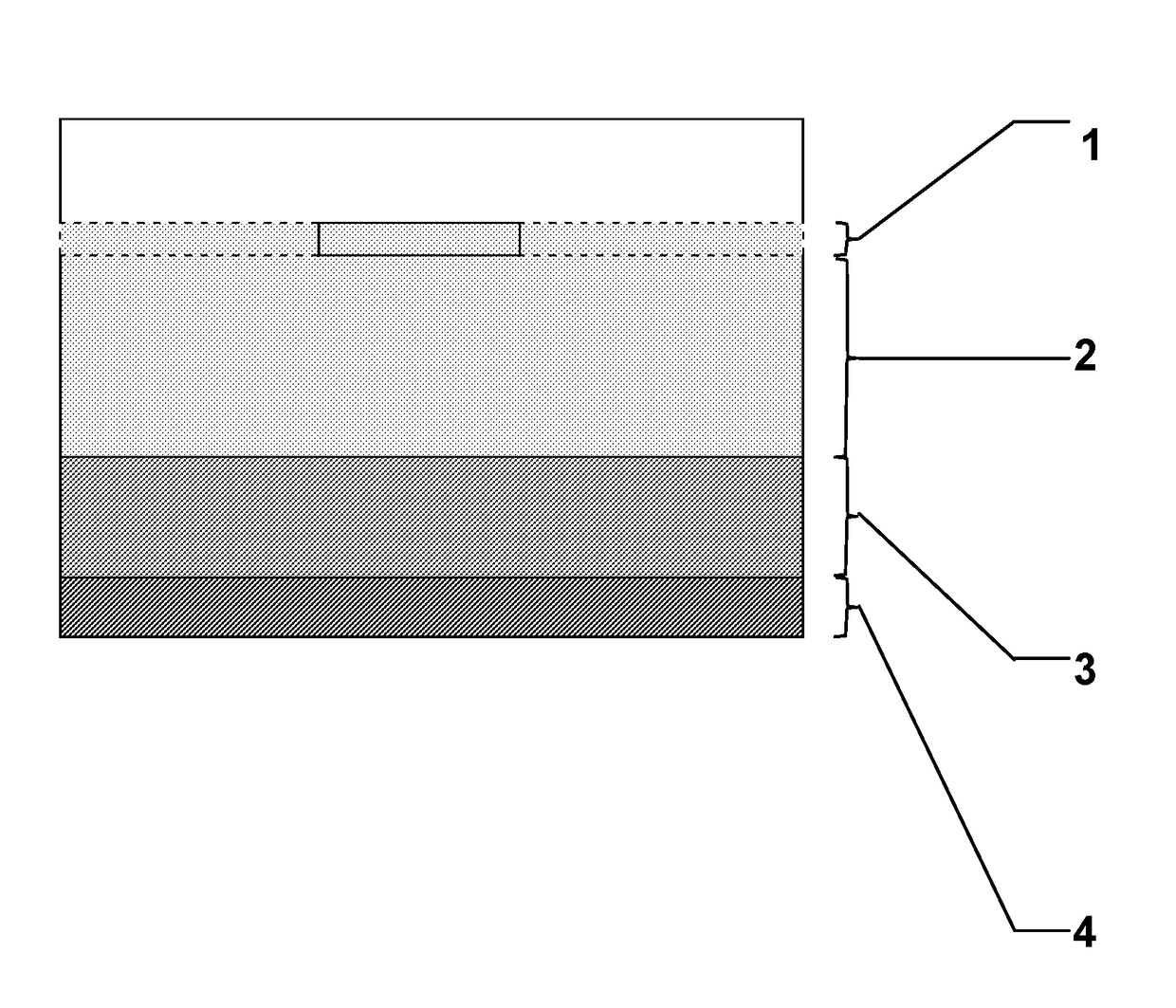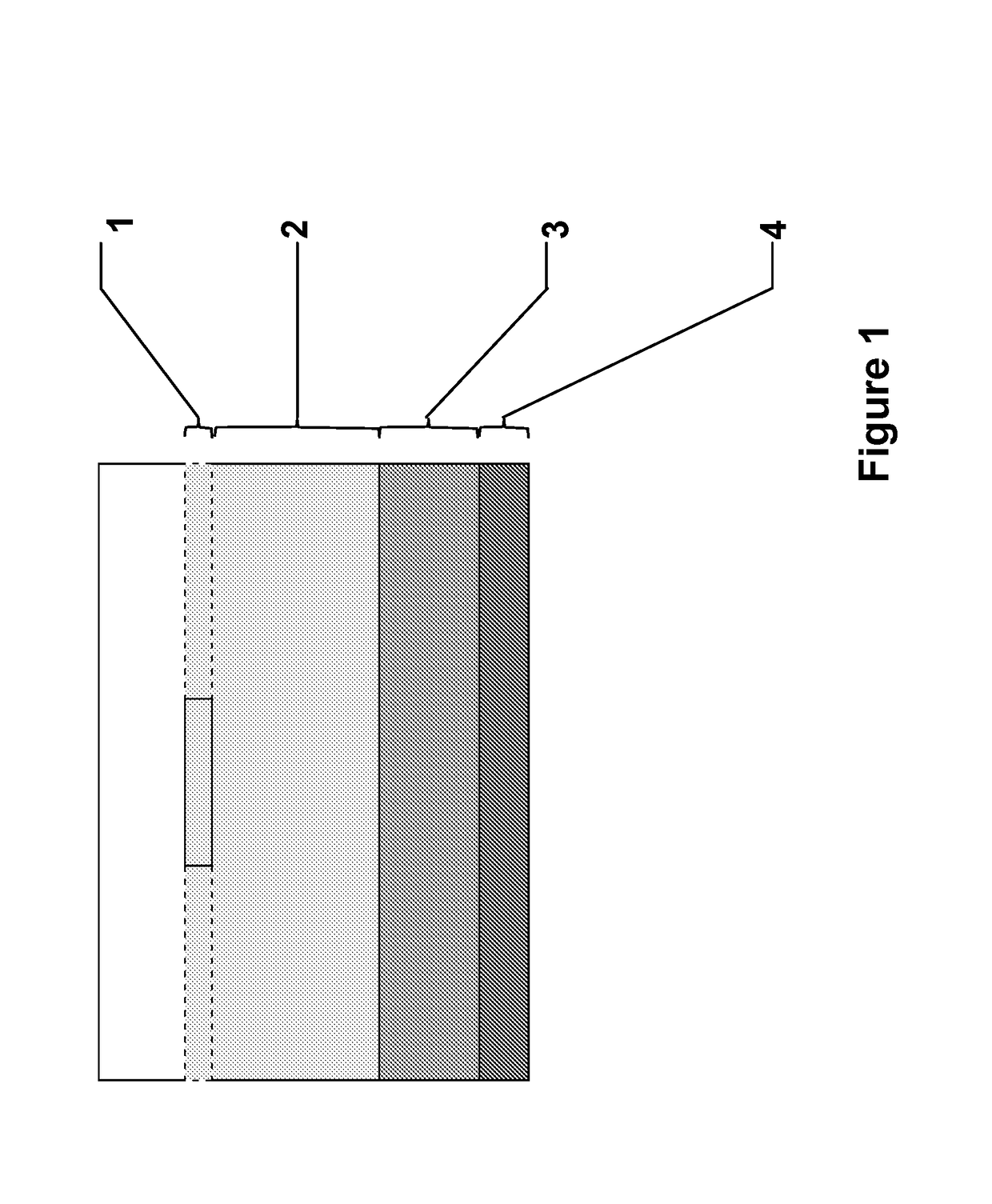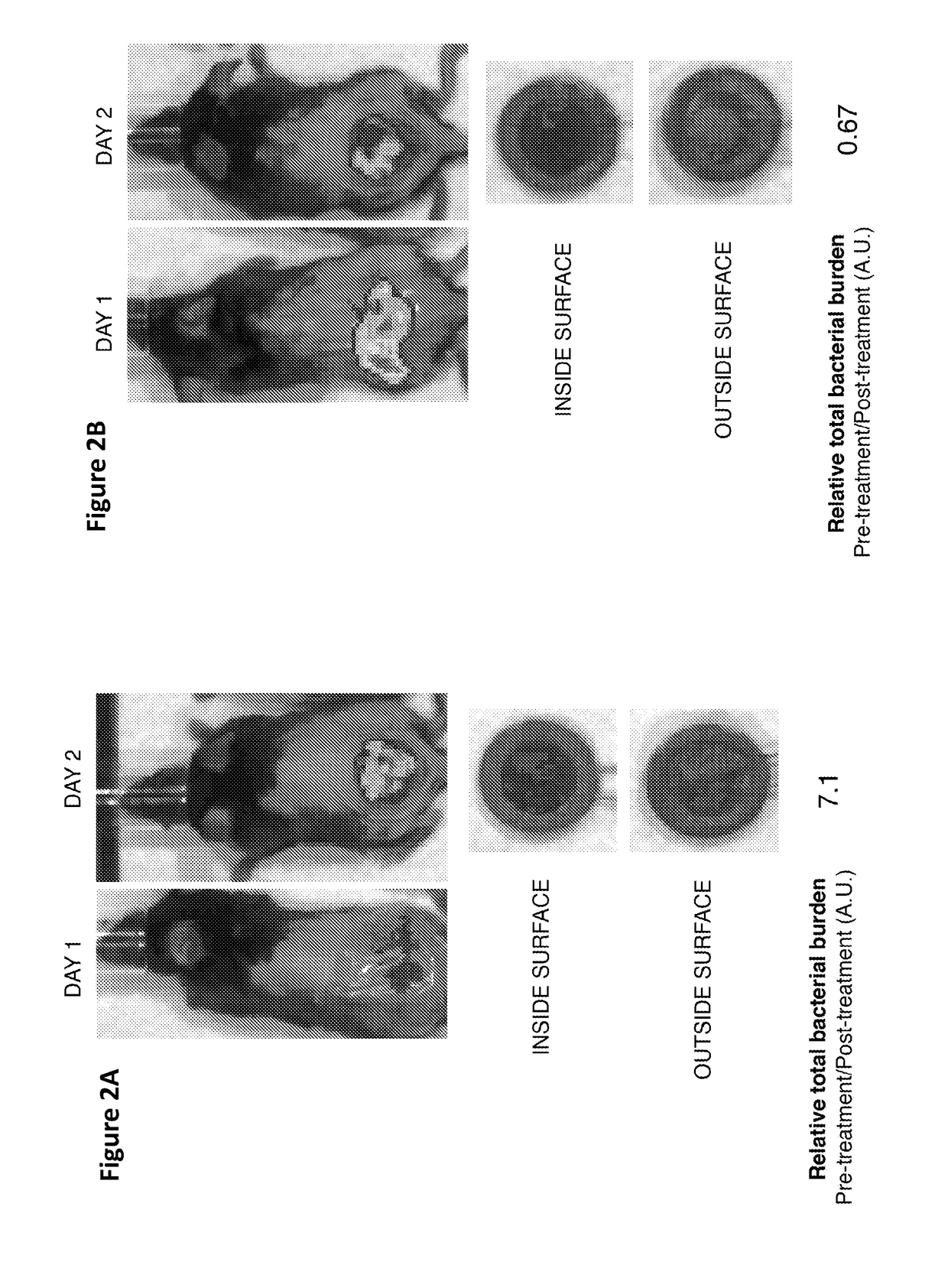Wound packing material comprising chemoeffector
- Summary
- Abstract
- Description
- Claims
- Application Information
AI Technical Summary
Benefits of technology
Problems solved by technology
Method used
Image
Examples
example 1
[0056]This approach can be used to demonstrate if chemotaxis of bacteria from a reservoir (the “bacteria layer”) to the vac foam is enhanced in the presence of an infused chemoattractant or presence of a chemorepellent. Referring to FIG. 1, the experimental system is constructed when layers are assembled in a clear vessel (to allow imaging) with a flat bottom. May be constructed in a flat bottomed tube, or a 50 mL conical tube if the conical portion of the tube is filled in with normal agar.
[0057]Target layer (1): Sponge, either laying on top of travel layer alone, or embedded in a layer of minimal swim agar. The embedding could be important for keeping the foam from drying out and to produce a close contact with the “travel layer.”
[0058]Travel layer (2). Minimal swim agar (0.2%). This is where chemotaxing bacteria can be observed.
[0059]Bacteria layer (3). Bacteria are suspended in cooled, but molten minimal swim agar. Overnight culture in LB rinsed in M9 buffer and added directly.
[...
example 2
[0062]To address whether the addition of a chemoattractant to the vac foam will elicit chemotaxis, no repellent is used. Referring to FIG. 1, a chemoattractant added to the sponge. Chemotaxis is monitored visually. Luminescent bacteria may be used to obtain better pictures, but wild type bacteria should be visible. For data collection, images are taken at a time interval that is optimized empirically. At the end of the experiment, the relative bacterial load on the sponge may be measured either via luminescence or by plating. Control values are obtained using the same set up without added chemoattractant.
[0063]Chemoattractant Mixture:
[0064]The following are mixed to give the final concentrations indicated:
L-amino acids (10 mM arginine; asparagine; glutamine; leucine; serine)Bovine mucin (100 μg / mL)OPTIONAL: D-galactose (≤0.1M)****D-galactose is a favorable carbon source, so it could support additional proliferation, but it is a strong attractant.
example 3
[0065]Purpose: to address whether the addition of a repellent to the system will accelerate chemotaxis to vac foam. Referring to FIG. 1, a chemoattractant added to the sponge. Chemotaxis is monitored visually. Luminescent bacteria may be used to obtain better pictures, but wild type bacteria should be visible. For data collection, images are taken at a time interval that is optimized empirically. At the end of the experiment, the relative bacterial load on the sponge may be measured either via luminescence or by plating. Control values are obtained using the same set up without added chemorepellent.
[0066]Chemorepellent mixture (Final concentrations are given):
trichloroethylene (0.5 mg / mL)chloroform (15 mg / L)methyltiocyanate (100 mg / L)DL-trifluoroleucine
PUM
| Property | Measurement | Unit |
|---|---|---|
| Volume | aaaaa | aaaaa |
| Volume | aaaaa | aaaaa |
| Density | aaaaa | aaaaa |
Abstract
Description
Claims
Application Information
 Login to View More
Login to View More - R&D
- Intellectual Property
- Life Sciences
- Materials
- Tech Scout
- Unparalleled Data Quality
- Higher Quality Content
- 60% Fewer Hallucinations
Browse by: Latest US Patents, China's latest patents, Technical Efficacy Thesaurus, Application Domain, Technology Topic, Popular Technical Reports.
© 2025 PatSnap. All rights reserved.Legal|Privacy policy|Modern Slavery Act Transparency Statement|Sitemap|About US| Contact US: help@patsnap.com



